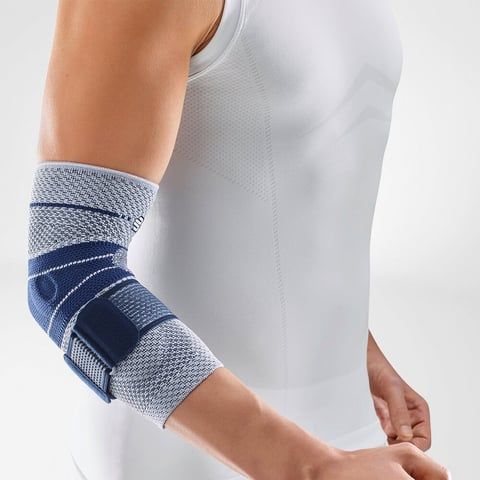Cubital Tunnel Syndrome
Cubital tunnel syndrome is a common and troublesome condition in the elbow. It can cause irritation and even limitations during many daily activities. In this article, you’ll learn everything about what this condition is, its causes, and symptoms. We’re happy to explain it to you.
What is cubital tunnel syndrome?
Cubital tunnel syndrome involves irritation of the nerve on the inside of the arm. This can cause tingling, pain, and numbness on the inner side of the elbow and along the pinky side of the hand. Cubital tunnel syndrome can be compared to the sensation you feel when you bump your elbow and experience a sharp, electric-like jolt running from your elbow to your wrist—often referred to as the “funny bone.” This nerve is called the ulnar nerve. It runs through a tunnel at the back-inner side of the elbow, which is formed by bone and a ligament. When the nerve becomes compressed, it causes symptoms along the inside of the elbow, and eventually in the hand and fingers.
What causes cubital tunnel syndrome?
The syndrome can be caused by trauma or a fall, or by frequent pressure on the elbow. It’s more common in people who often bend and use their elbows, such as in construction or office work. People who sleep with bent elbows are also at greater risk of developing cubital tunnel syndrome.
What are the symptoms?
Symptoms of cubital tunnel syndrome include pain and tingling on the pinky side of the hand and along the inner side of the forearm/elbow. You may also experience occasional sensory disturbances in the elbow or forearm. A bent elbow can worsen the symptoms, which often happens at night when sleeping with the elbow bent.
What is the recovery process like?
After a thorough consultation with a doctor, a physical examination is carried out. The diagnosis can be confirmed with an EMG (electromyogram). Rest and avoiding the triggering activities can lead to improvement. A physical therapist can also provide advice to reduce symptoms. If symptoms persist or worsen, surgery may be considered. Other options to support recovery include wearing a brace or receiving physiotherapy—sometimes both are recommended.
Surgery
If previous treatments are ineffective, surgery may be necessary. During the procedure, an incision is made on the inside of the elbow to expose the nerve and determine where the pressure is occurring. A piece of tissue or bone is then removed to relieve the pressure on the nerve. After the operation, you may experience pain and swelling, but this typically resolves on its own. Rest is often advised following surgery, and physiotherapy may be recommended to aid recovery.
Cubital tunnel syndrome brace
In addition to physiotherapy, wearing an elbow brace can help reduce pressure and pain. Several braces are available for this purpose. Feel free to contact us for more information about using a brace for cubital tunnel syndrome. We’re happy to provide you with the right advice.

- Physiotherapist
- Sports podiatrist
- Manual therapist
- Podopostural therapist
- Myofascial dry needling specialist






